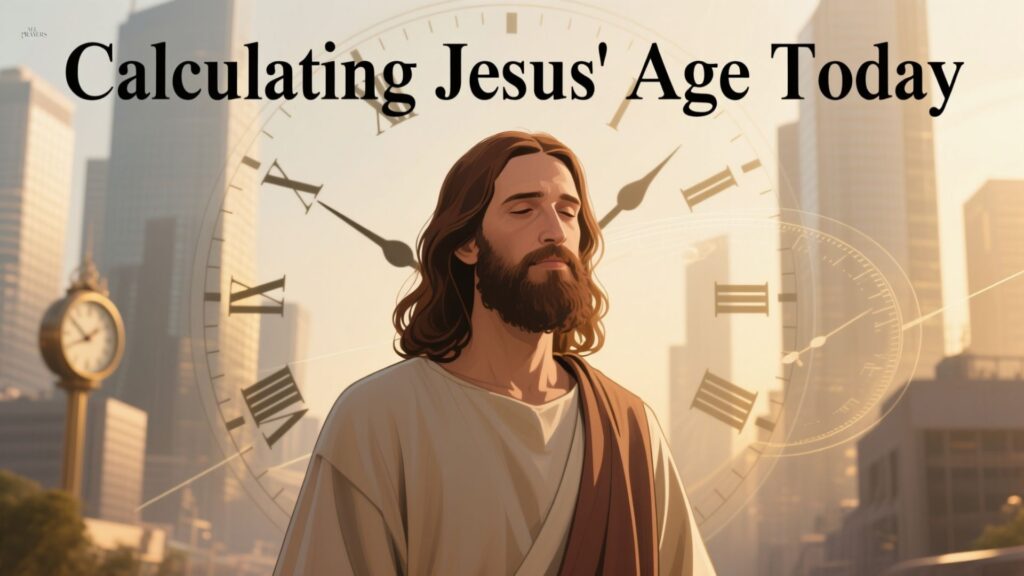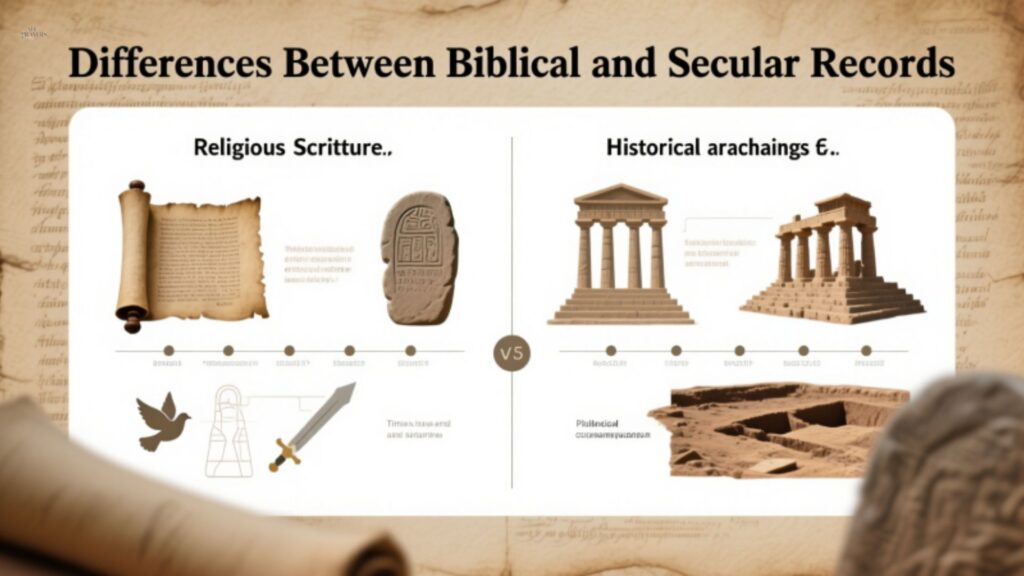Ever wondered how old Jesus would be today? It’s a question that drops curiosity across cultures and faiths. The answer isn’t as simple as you might think.
Most people suppose Jesus Christ was born in year zero. That’s actually wrong. Modern scholars place his birth between 4-6 BC, making him about 2,029 to 2,031 years old in 2025.
This interesting calculation combines history, archaeology, and mathematics. Let’s jump deep into the proof and discover why determining Jesus Christ’s age today remains one of history’s most interest puzzles.
Understanding Jesus’ Birth Year
Historical Context of Jesus’ Birth
The birth of Jesus takes place during a loud period in ancient Palestine. The Roman Empire controlled the region, imposing heavy taxes and strict governance.
Key historical markers include:
- King Herod the Great ruled Judea until 4 BC
- Roman census records mention population counts
- Political unrest was common throughout the region
- Life expectancy rarely exceeded 35 years
- Most births weren’t officially documented
Archaeological boring in Bethlehem reveals a small town of roughly 300-1,000 residents. Nazareth was even smaller, with perhaps 400 people total.
These discoveries help historians understand the world where Jesus lived. Every detail matters when calculating Jesus’ age in 2025.
Calendar Systems and Year Calculations
Our modern calendar creates significant confusion about Jesus’ birth year. The BC/AD system wasn’t established until 525 AD by monk Dionysius Exiguus.
Here’s the problem: Dionysius made calculation errors. He placed Christ’s birth several years too late.
Calendar complications include:
| Issue | Impact |
| No year zero | Jumps from 1 BC to 1 AD |
| Julian calendar used | Different from modern Gregorian |
| Calculation errors | Birth placed too late |
| Regional variations | Different dating systems |
The Christian calendar we use today doesn’t actually align with historical Jesus birth records. This difference affects every age calculation.
Discrepancies in Historical Records
Ancient calendars varied significantly across regions. Romans, Jews, and Greeks all used different systems for tracking years.
Major record-keeping challenges:
- Birth certificates didn’t exist
- Oral tradition controlled written records
- Political events overshadowed personal dates
- Religious calendars differed from civil ones
- Translation errors occurred over centuries
Jesus historical records come primarily from the Gospels, written decades after his death. Secular historians like Josephus provide additional context but limited birth details.
Calculating Jesus’ Age Today

Common Theories on Jesus’ Birth Year
Biblical chronology scholars have proposed several years of Jesus’ birth options based on available proof .
Most accepted theories:
4 BC Theory (Most Popular)
- King Herod died in 4 BC
- Gospel accounts mention Herod during Jesus’ birth
- Makes Jesus approximately 2,029 years old today
- Supported by majority of historians
6 BC Theory
- Some scholars prefer earlier dating
- Based on census and huge records
- Would make Jesus 2,031 years old currently
- Less popular but historically likeable
2 BC Theory
- Alternative review of Gospel timeline
- Results in Jesus being 2,027 years old now
- Fewer scholars support this dating
Method for Calculating Age
How historians determine Jesus’ age involves careful mathematical work across calendar systems.
Step-by-step calculation process:
- Identify proposed birth year (4 BC most common)
- Add current year (2025)
- Subtract one year (no year zero exists)
- Result: 4 + 2025 – 1 = 2,028 years old
However, this calculation assumes January 1st birth. Jesus’ birth date according to scholars likely occurred in spring or fall, not December 25th.
Possible Age Ranges
Based on scholarly consensus, Jesus Christ today would be between 2,027 and 2,031 years old.
Detailed age breakdown:
| Birth Year | Calculation | Current Age |
| 6 BC | 6 + 2025 – 1 | 2,030 years |
| 5 BC | 5 + 2025 – 1 | 2,029 years |
| 4 BC | 4 + 2025 – 1 | 2,028 years |
| 3 BC | 3 + 2025 – 1 | 2,027 years |
| 2 BC | 2 + 2025 – 1 | 2,026 years |
What year was Jesus born? Most evidence points to 4 BC, making him approximately 2,028 years old right now.
Biblical and Historical Perspectives
Gospel Accounts of Jesus’ Birth
The Bible timeline provides several clues about Jesus’ age according to the Bible. Matthew and Luke offer the most detailed birth narratives.
Matthew’s Account:
- Mentions King Herod’s reign
- Describes wise men following a star
- References Herod’s massacre of infants
- Places birth in Bethlehem
Luke’s Account:
- Describes Roman census under Quirinius
- Mentions shepherds and angels
- Provides genealogy back to Adam
- Emphasizes Bethlehem location
Both Gospels agree on key details but differ on specific timeline elements. These differences contribute to ongoing scholarly debate about exact dating.
Insights from Historians
Historical estimates of Jesus’ birth come from multiple academic sources. Leading scholars have spent decades analyzing available evidence.
Notable historian perspectives:
John P. Meier (Catholic University)
- Places birth between 7-4 BC
- Emphasizes Herod timeline importance
- Supports 4 BC dating
Geza Vermes (Oxford University)
- Argues for 5-4 BC range
- Focuses on archaeological evidence
- Questions December 25th tradition
E.P. Sanders (Duke University)
- Prefers 4 BC dating
- Emphasizes Gospel reliability
- Considers Roman records carefully
These experts represent Christian history’s most respected voices on Jesus’ historical age debate.
Differences Between Biblical and Secular Records

Jesus’ birth according to historians depends on which sources you prioritize.
Biblical sources emphasize:
- Theological significance of timing
- Fulfillment of prophecies
- Divine intervention in history
- Spiritual rather than chronological precision
Secular historians focus on:
- Archaeological evidence
- Cross-referencing multiple sources
- Political and social context
- Scientific dating methods
Both approaches contribute valuable insights to determining how old Jesus is now.
Why the Exact Age is Debated
Lack of Exact Historical Records
Jesus’ birth year is uncertain lies in ancient record-keeping practices.
Record-keeping limitations:
- Personal births weren’t officially documented
- Oral tradition dominated early Christianity
- Political turmoil disrupted record preservation
- Religious persecution destroyed early documents
- Translation errors accumulated over centuries
Fun facts about Jesus’ age: Most people in his era didn’t know their exact birth dates either. Age was approximated based on significant events.
Variations in Ancient Calendars
Ancient civilizations used completely different biblical chronology systems than our modern calendar. Calendar systems during Jesus’ time:
Roman Calendar
- 10-month system originally
- Later expanded to 12 months
- Frequent adjustments and reforms
- Political influence on dating
Jewish Calendar
- Lunar-based system
- Religious festivals determined timing
- Different New Year dates
- Sabbatical year cycles
Local Variations
- Regional dating preferences
- Cultural celebration differences
- Trade route influences
- Military campaign markers
These variations make calculating Jesus’ age extremely challenging for modern scholars.
Scholarly Interpretations
The age of Jesus in history remains actively debated among academics worldwide. Current scholarly trends:
Conservative Approach
- Relies heavily on Gospel accounts
- Accepts traditional dating methods
- Emphasizes religious source reliability
- Supports 4-6 BC birth range
Liberal Approach
- Prioritizes archaeological evidence
- Questions traditional assumptions
- Uses scientific dating methods
- Sometimes suggests wider date ranges
Moderate Position
- Combines religious and secular sources
- Acknowledges uncertainty while noting consensus
- Focuses on most probable scenarios
- Generally supports 4 BC dating
Fun Facts and Cultural References

Celebrating Jesus’ Birthday Around the World
Jesus’ birthday debate increased far beyond well read circles. Different cultures celebrate his birth on various dates. Global Christmas celebrations:
Western Christianity (December 25th)
- Roman Catholic tradition
- Protestant denominations
- Established by Emperor Constantine
- No biblical support for date
Eastern Orthodox (January 7th)
- Uses Julian calendar
- Celebrated by Russian, Serbian churches
- Different calendar calculation system
- Maintains ancient traditions
Ethiopian Orthodox (January 7th or 29th Tahsas)
- Unique calendar system
- Called “Genna” celebration
- Different from Western traditions
- Local cultural influences
Coptic Christians (January 7th)
- Egyptian Orthodox tradition
- Ancient calendar preservation
- Distinct liturgical practices
- Historical significance
Depictions of Jesus’ Age in Art and Media
Throughout history, artists have drawn Jesus Christ at various ages. These depictions reflect cultural assumptions about his appearance and significance. Artistic age representations:
Byzantine Art (300-1450 AD)
- Usually depicted as mature adult
- Emphasized divine rather than human aspects
- Consistent age representation
- Religious symbolism dominant
Renaissance Period (1400-1600)
- More humanized portrayals
- Varied age representations
- Italian cultural influences
- Artistic innovation increased
Modern Media
- Film and television portrayals
- Usually shows Jesus in his 30s
- Based on traditional assumptions
- Popular culture influence
Influence of Jesus’ Age on Christian Traditions
The Biblical timeline of Jesus’ life significantly impacts Christian theology and practice. Age-related traditions:
Baptism Age
- Jesus baptized around age 30
- Many denominations emphasize adult baptism
- Symbolic significance of maturity
- Personal decision emphasis
Ministry Duration
- Approximately 3-year public ministry
- How old was Jesus when he died? Around 33
- Crucifixion and resurrection timing
- Theological importance of life span
Coming of Age
- Jewish bar mitzvah at 13
- Jesus teaching in temple
- Cultural maturity markers
- Religious responsibility
Importance of Historical Understanding
Understanding how old Jesus would be today connects us to ancient history and helps contextualize his influence on modern civilization.
Educational benefits include:
- Improved historical literacy
- Better understanding of Christian history
- Appreciation for scholarly research methods
- Connection between ancient and modern worlds
Final Thoughts on the Debate
While we may never know Jesus’ exact birth date, current evidence strongly suggests he would be approximately 2,028 years old today.
This calculation fascinates believers and historians alike. It bridges the gap between ancient history and modern curiosity.
The question “how old would Jesus be today?” ultimately reminds us that historical figures continue influencing our world across millennia.
Whether you approach this topic from faith, history, or simple curiosity, the evidence points to a remarkable conclusion: the historical Jesus would have lived over two thousand years by now.
Conclusion
So how old would Jesus be today? Based on historical proof, Jesus Christ would be around 2,028 years old right now. Here’s what historians agree on. Jesus was most likely born in 4 BC. He died when he was about 33 years old. That means if he were still live today, he’d be over two thousand years old.
Most scholars support this calculation. The 4 BC birth year has the strongest proof. It matches up with King Herod’s death and the Gospel stories.
Sure, experts might discover new things that change these numbers. But for now, 2,028 years old is our best guess. It’s pretty amazing to think about someone from that long ago still affecting our world today.
FAQs
What year was Jesus actually born?
Most historians agree Jesus was born around 4 BC, though some suggest dates between 6-2 BC. The 4 BC date ranges best with King Herod’s death and Gospel accounts.
Why isn’t Jesus exactly 2,025 years old in 2025?
The BC/AD calendar system contains calculation errors. Monk Dionysius Exiguus miscalculated Jesus’ birth year by 4-6 years when creating our calendar system.
How old would Jesus be if born in different proposed years?
- 6 BC birth: 2,031 years old
- 4 BC birth: 2,029 years old
- 2 BC birth: 2,027 years old
Do all historians agree on Jesus’ birth year?
No, but most scholars support the 4-6 BC range. The 4 BC date has strongest support due to King Herod timeline proof and Gospel account unity.
How does Jesus’ age calculation differ from other historical figures?
Jesus historical records face unique challenges due to limited present documentation, calendar system changes, and religious versus earthly source differences.
What evidence do we have for Jesus’ birth timing?
Evidence includes Gospel accounts, references to King Herod, Roman census records, huge data, and archaeological findings from Bethlehem and surrounding areas.
Could Jesus’ actual age be different from current estimates?
Yes, new archaeological discoveries could possibly shift dating. However, the 4-6 BC range represents current best evidence and scholarly consensus.
How accurate are ancient historical records about birth dates?
Ancient societies seldom recorded exact birth dates for common people. Dating depends on significant political events, natural accidents, or religious festivals for reference points.
Must Read This Blog…..60 Heart Touching New Month Wishes for My Boyfriend